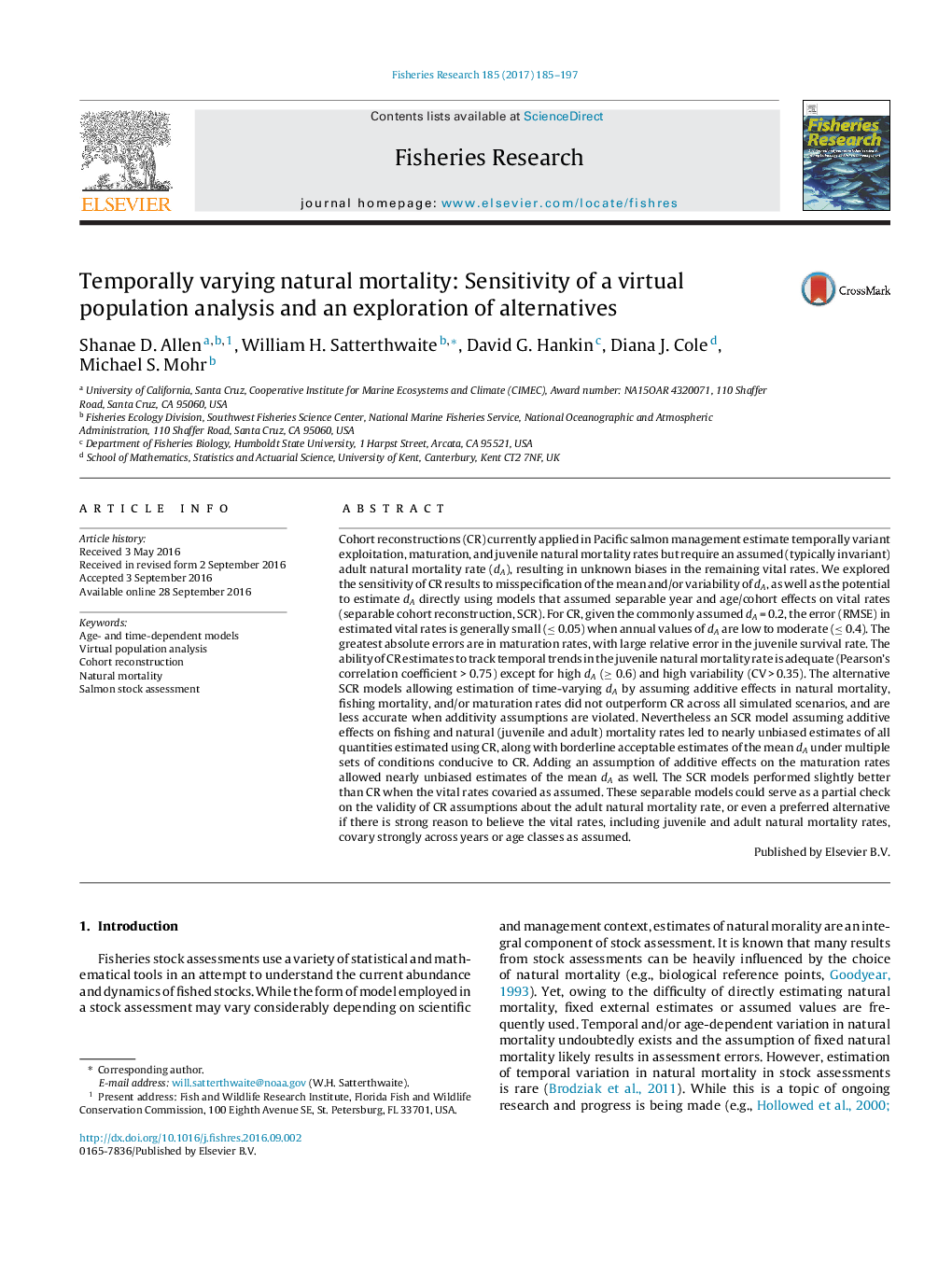| Article ID | Journal | Published Year | Pages | File Type |
|---|---|---|---|---|
| 4542654 | Fisheries Research | 2017 | 13 Pages |
•Salmon cohort reconstructions (CR) commonly assume fixed, low adult natural mortality rate.•CR estimate remaining vital rates well unless adult natural mortality rate is approximately twice that assumed.•Separable models make adult natural mortality rate identifiable through additive effects.•Separable models did not outperform CR and performed worse when assumptions violated.•Some separable models estimated adult natural mortality rates with little bias under conditions conducive to CR.
Cohort reconstructions (CR) currently applied in Pacific salmon management estimate temporally variant exploitation, maturation, and juvenile natural mortality rates but require an assumed (typically invariant) adult natural mortality rate (dA), resulting in unknown biases in the remaining vital rates. We explored the sensitivity of CR results to misspecification of the mean and/or variability of dA, as well as the potential to estimate dA directly using models that assumed separable year and age/cohort effects on vital rates (separable cohort reconstruction, SCR). For CR, given the commonly assumed dA = 0.2, the error (RMSE) in estimated vital rates is generally small (≤ 0.05) when annual values of dA are low to moderate (≤ 0.4). The greatest absolute errors are in maturation rates, with large relative error in the juvenile survival rate. The ability of CR estimates to track temporal trends in the juvenile natural mortality rate is adequate (Pearson's correlation coefficient > 0.75) except for high dA (≥ 0.6) and high variability (CV > 0.35). The alternative SCR models allowing estimation of time-varying dA by assuming additive effects in natural mortality, fishing mortality, and/or maturation rates did not outperform CR across all simulated scenarios, and are less accurate when additivity assumptions are violated. Nevertheless an SCR model assuming additive effects on fishing and natural (juvenile and adult) mortality rates led to nearly unbiased estimates of all quantities estimated using CR, along with borderline acceptable estimates of the mean dA under multiple sets of conditions conducive to CR. Adding an assumption of additive effects on the maturation rates allowed nearly unbiased estimates of the mean dA as well. The SCR models performed slightly better than CR when the vital rates covaried as assumed. These separable models could serve as a partial check on the validity of CR assumptions about the adult natural mortality rate, or even a preferred alternative if there is strong reason to believe the vital rates, including juvenile and adult natural mortality rates, covary strongly across years or age classes as assumed.
